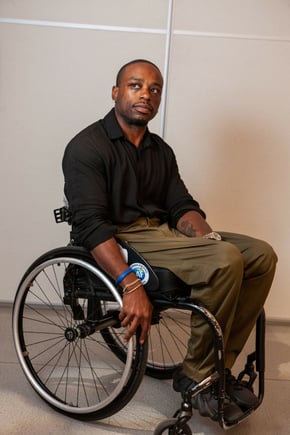Transitioning home after a spinal cord injury can be difficult for many reasons. Some may need to make home modifications, some may need durable medical equipment, and personal care supplies. I remember my first day home like it was yesterday (actually 17 years ago). It seemed like an appointment was every day, whether it was a specialty doctor I was visiting or therapy. It became a lot and it got to be very overwhelming. Hopefully you will find this blog to be very helpful with some of the advice that I will be providing.

One of the first things you want to do prior to being discharged is set up the delivery of your personal care needs, such as catheter supplies, wound care supplies, non-latex gloves, and bowel care supplies. These items will vary depending on your injury level and the type of program that you are on. Another very important note I would like to make is to try and always order more than you need, the reason being that anything can happen. Also, when it comes to your medications, try to develop a good relationship with your pharmacist; they are the ones that will let you know what is covered. Along with letting you know what’s covered, they will get a sense of how frequently you may use medication, and they sometimes can put the order in early so you will have your medication when you need it.
If you require a caregiver upon discharge, you will also want to make sure that they are fully trained to assist you. Depending on your level of injury and your level of independence, this will play a role in the needs and the ability you are looking for in your caregiver.
Be aware of autonomic dysreflexia (better known as AD). This is when your body is responding to either pain or discomfort. Typically, with AD, your bloods pressure will increase 20-40 points above your baseline, along with a slow heart rate, sweating (sometimes above the injury level), blurred vision, among other signs. Usually, a person can experience AD because of pressure sores, bladder fullness, contact with hard surfaces, ingrown toenails, broken bones, and a few other reasons. There are a variety of ways people can treat AD; some may work better than others, but here are a few – sitting straight up, loosening any tight clothing, emptying your bladder, and checking your skin for sores.
Finding social activities such as adaptive sports is something I encourage every newly injured person that I encounter to do. Besides your typical therapy routine, it is good to find a sport or social activity that will help in getting you out the house on a consistent basis, along with keeping you active. Along with finding a social activity or a sport, you will have an opportunity to learn from the community. I have found that with living with a Spinal Cord Injury, it is beneficial to find someone you can learn from that shares a similar injury.
Transportation, especially having access to a vehicle, is crucial but not necessary in the beginning. I always recommend setting up your transportation as far as completing applications, etc. It should take place prior to your discharge. If you have access to a vehicle and want to get it adapted, it will greatly increase your independence. However, depending on the adaptions, it can be costly.

